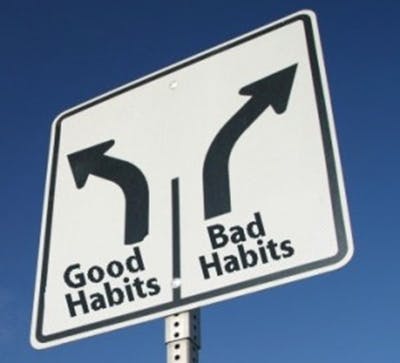Does it feel like your employees are on autopilot? That they don’t listen to HR communications and don’t engage with new HR initiatives?
Well, they are on autopilot. In fact, we all are.
Behavioral researchers estimate that 45 percent of our daily lives are rigidly controlled by habits. When we face a familiar situation, we don’t think consciously about what we’re doing and we just do what we’ve done before.
Habits help make us effective
For example, when you get to the office in the morning, do you carefully deliberate over the costs and benefits of getting a cup of coffee or checking your email? Of course not; you just go do it.
That’s because it’s a habit. Similarly, habits allow us to quickly and efficiently fill out time sheets, run analyses, send emails, etc.
Habits are essential in our daily lives; they make us (and our employees) effective at our jobs. They also undermine many well-meaning HR initiatives.
Here’s why: As leading researchers Wendy Wood and David Neal put it, habits “outsource control over our behavior to the environment.” We see something (like the coffee maker in the morning), and act automatically (go get coffee). We don’t have to waste time and energy thinking about it; instead, our minds are free to think about more important things, like the report that’s due at the end of the day.
We form habits by repeatedly doing something in the same setting. Habits are a hardwired association between the setting (coffee maker in the morning) and the action (get coffee). The problem with habits is that they are tremendously difficult to override, and that’s exactly what many HR initiatives ask employees to do.
Don’t yell at employees to change their habits
Let’s say your company is trying to help employees become healthier, and decrease health insurance costs, by starting a new wellness program with heavily subsidized gym memberships
Things start off by asking employees if they want to be healthy and exercise more — and naturally, most people say yes. There’s a kick-off event and there’s lots of excitement.
But, somehow, employees just don’t show up to the gym. You send out reminders. You talk about the program in the company newsletter. You threaten to discontinue the subsidy.
Those who were already fit and trim – sure, they go (thanks for the gym discount!). But those who really need it? No luck. Because when employees say they want to exercise, that’s a conscious choice. Actually doing it means changing non-conscious habits.
It means NOT driving home immediately after work (a habit). It means NOT watching TV or surfing the Internet when they get home. Or, it means NOT waking up and going through the normal routine in the morning as the employee has for years.
Sure, any one of us can override our habits and decide to go to the gym on a particular evening. But, to remember to do that every few days would take conscious effort way from our jobs and our families.
Instead, the best way to fight a habit is not brute force – but to use our habits to own advantage.
Strategy 1: Change the environment
Habits are triggered something in the environment, a cue. That cue tells the mind: “OK, now it’s time to do X.” You can decrease X by removing the cue.
For example, if employees have a bad habit of eating unhealthy food in the company cafeteria and they want to eat better, then remove the “unhealthy eating cues” — put the junk food in opaque containers, move the water in front of the sodas, etc.
That’s exactly what Google and other leading companies have done with their cafeterias.
Strategy 2: Hijack existing habits
If you want to get employee attention for something new – a new work process, HR communications, etc. – then then look for ways to build on people’s existing habits.
Instead of asking them to pay attention to posters or flyers that no one reads, figure out when and where they are putting their attention.
For example, if employees regularly read company emails on Sunday evenings in preparation for the work week, send them an email then. In formal experiments at HelloWallet, we’ve seen a 2x increase in employee engagement with simple changes like this to hijack existing habits.
Strategy 3: Build new habits
Old habits never really die; the circuits in the brain remain long after they are needed or wanted. But, employees can crowd them out with new, competing habits.
Here’s how it works: Remember the example of employees not going to the gym? One way to help employees go is to explicitly build a habit around it. Provide a regular time, a regular day, and a regular set of cues for exercising, and use enough competitions, incentives, snazzy marketing, or other temporary tricks to have employees repeat the action over the course of a month or so.
Once it becomes routine, the temporary incentives can and should be removed, but the environment (the cues, the timing etc.) must stay exactly the same.
Leverage habits to improve outcomes
Once we understand that much of employee behavior (and our own) is habitual, we can adapt our HR initiatives to make them more successful. I’ve offered three strategies that can help – by working with employee habits, instead of using brute force to overcome them.
When employees don’t use a wellness program, don’t complete a training course, or don’t engage with employee communications, we don’t need to throw our hands up in frustration. We just need to understand how habits work, and how we can help enable employees to take action.
